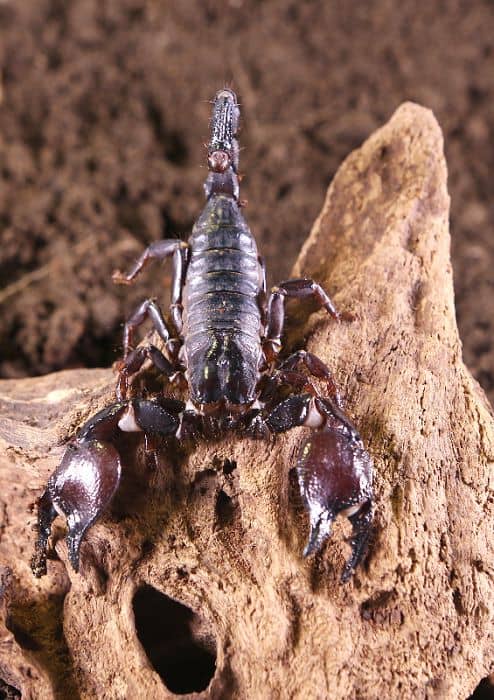Table of Contents
Scorpions are not creatures usually associated with being fat or overweight, so if you notice that yours is looking a little more rotund than usual, there could be good reason for this. Considering that scorpions in captivity typically survive on a diet of insects, it is difficult for us humans to imagine them getting fat from this, but it is possible to overfeed pet scorpions. And this is something that novice scorpion keepers are often guilty of.
How Often Do You Feed a Pet Scorpion?
Pet scorpions should not be fed every day, which is a mistake that many newbie keepers will make. It is easy to assume that your scorpion might be hungry and that by offering food every day you are being kind. However, the reality is that feeding it daily could actually do more harm than good.
might be hungry and that by offering food every day you are being kind. However, the reality is that feeding it daily could actually do more harm than good.
If your scorpion eats too often, it will grow too quickly. This means that its body could become too big for its exoskeleton. Scorpions molt as their body grows, allowing a new exoskeleton to form around the expanding body. If the body grows too rapidly, the exoskeleton will become too tight, which could crush the body inside.
It is best to feed a scorpion around two to three times per week at most. You can usually tell whether a scorpion is getting hungry because it will scurry about anxiously in its enclosure before a feed and will pounce on insects when fed. If you are feeding too much, the scorpion will likely ignore food that you have put in the enclosure. In this case, it is probably best to wait another day before feeding and removing any uneaten food.
How much and how often a scorpion eats typically depends on the size and species of scorpion in question. A large scorpion will only eat around two to three crickets in a week. Feeding any more than this could lead to it becoming fat.
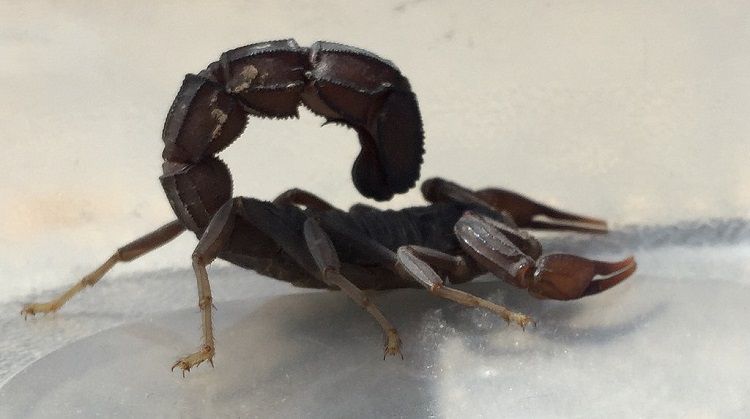
Black Fat-Tailed Scorpion 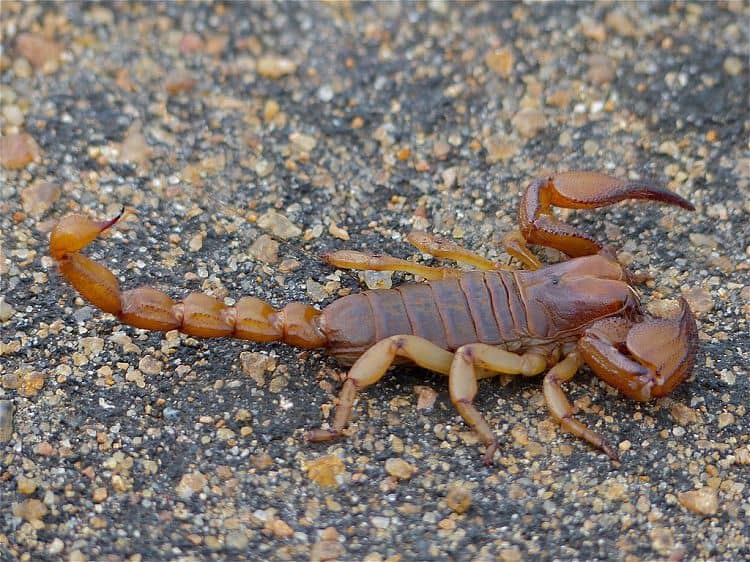
Shiny Burrow Scorpion 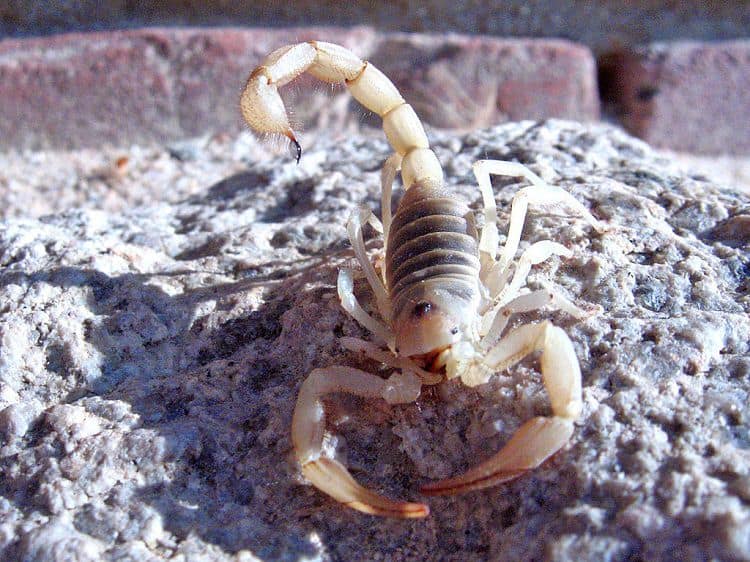
Giant Hairy Scorpion
Are There Other Reasons My Scorpion Looks Fat?
Overfeeding may not be the only reason for a ‘fat’ scorpion. In fact, scorpions that are gravid (carrying eggs), will also look a lot more rounded than usual. If you have just bought your scorpion and it is already sexually mature (about three years of age), it could have been already gravid when you bought it.
It is difficult to tell the age of a scorpion unless you have had it from birth. Nevertheless, you can tell whether a scorpion is a juvenile, sub-adult, or adult from the color of its telson (this is the part of the scorpion that the stinger is attached to). In a juvenile, the telson is white. A sub-adult’s telson will be a darker, milky-colored white, while the telson in an adult scorpion will be a reddish-brown color.
If your scorpion could not be gravid and you have not been overfeeding it, you should consider the possibility that it is in the process of molting. When scorpions molt, their exoskeletons begin to crack/expand as a new one grows underneath. This can give the appearance that the scorpion is bigger, or fatter as some people describe it.
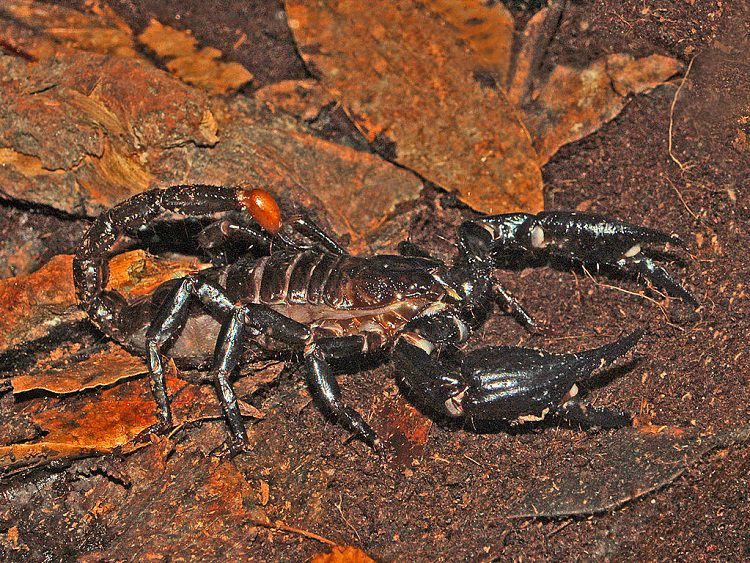
Malaysian Black Scorpion 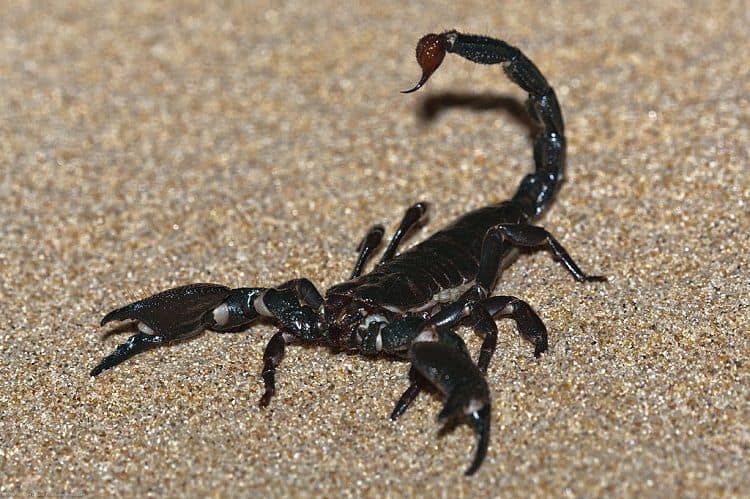
Emperor Scorpion 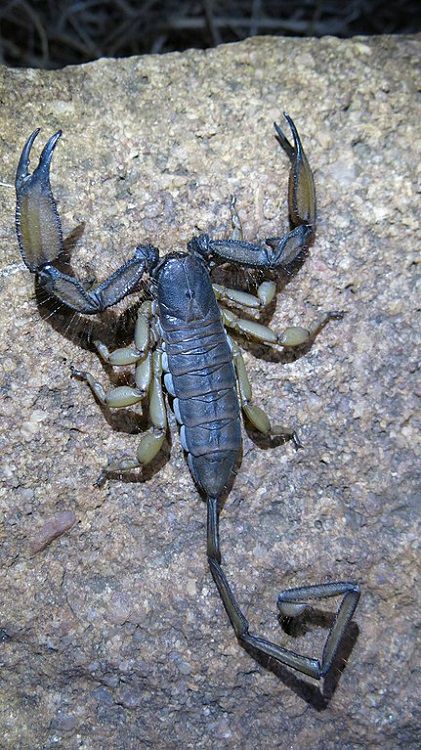
Flat Rock Scorpion 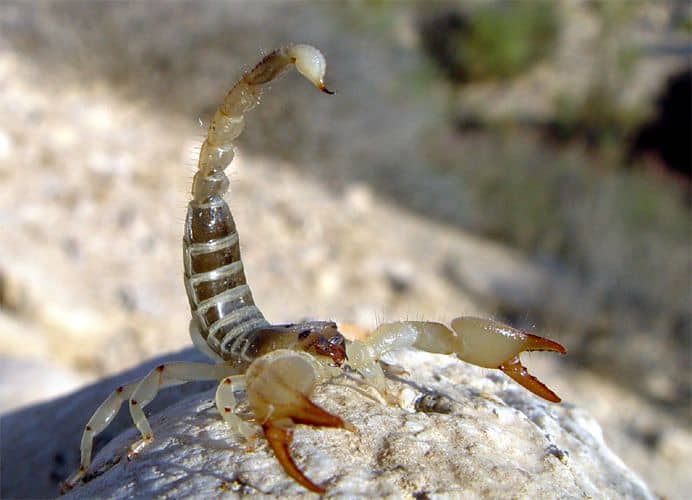
Large-Clawed Scorpion
Before a molt, scorpions typically stop eating and may even go into hiding as they try to conserve their energy before the molting beings. The process can take around twelve hours from start to finish and can be incredibly stressful for the scorpion as the process requires a lot of energy. It is vital that you do not disturb it during this period. Also note that immediately after a molt your scorpion’s new exoskeleton will be quite soft, making it extremely vulnerable. The exoskeleton will harden over the next few days, so it is best to just leave it alone until this has happened.
As always, if you are worried about your scorpion, we would recommend seeking advice from an experienced exotic vet.
Photo Credits:
- Featured Image (Tanzanian Red Clawed Scorpion): animalscene.ph
- Giant Hairy Scorpion: Robb Hannawacker
 – CC BY 2.0
– CC BY 2.0 .
. - Malaysian Black Scorpion: Hectonichus
 – CC BY-SA 3.0
– CC BY-SA 3.0 .
. - Flat Rock Scorpion: Ryanvanhuyssteen – CC BY-SA 4.0
 .
. - Black Fat-Tailed Scorpion: Speedphi – CC BY-SA 4.0
 .
. - Shiny Burrow Scorpion: Bernard DUPONT
 – CC BY 2.0
– CC BY 2.0 .
. - Emperor Scorpion: Mike Baird
 – “Mike” Michael L. Baird
– “Mike” Michael L. Baird – CC BY 2.0
– CC BY 2.0 .
. - Large-Clawed Scorpion: Guy Haimovitch – CC BY-SA 3.0
 .
.

